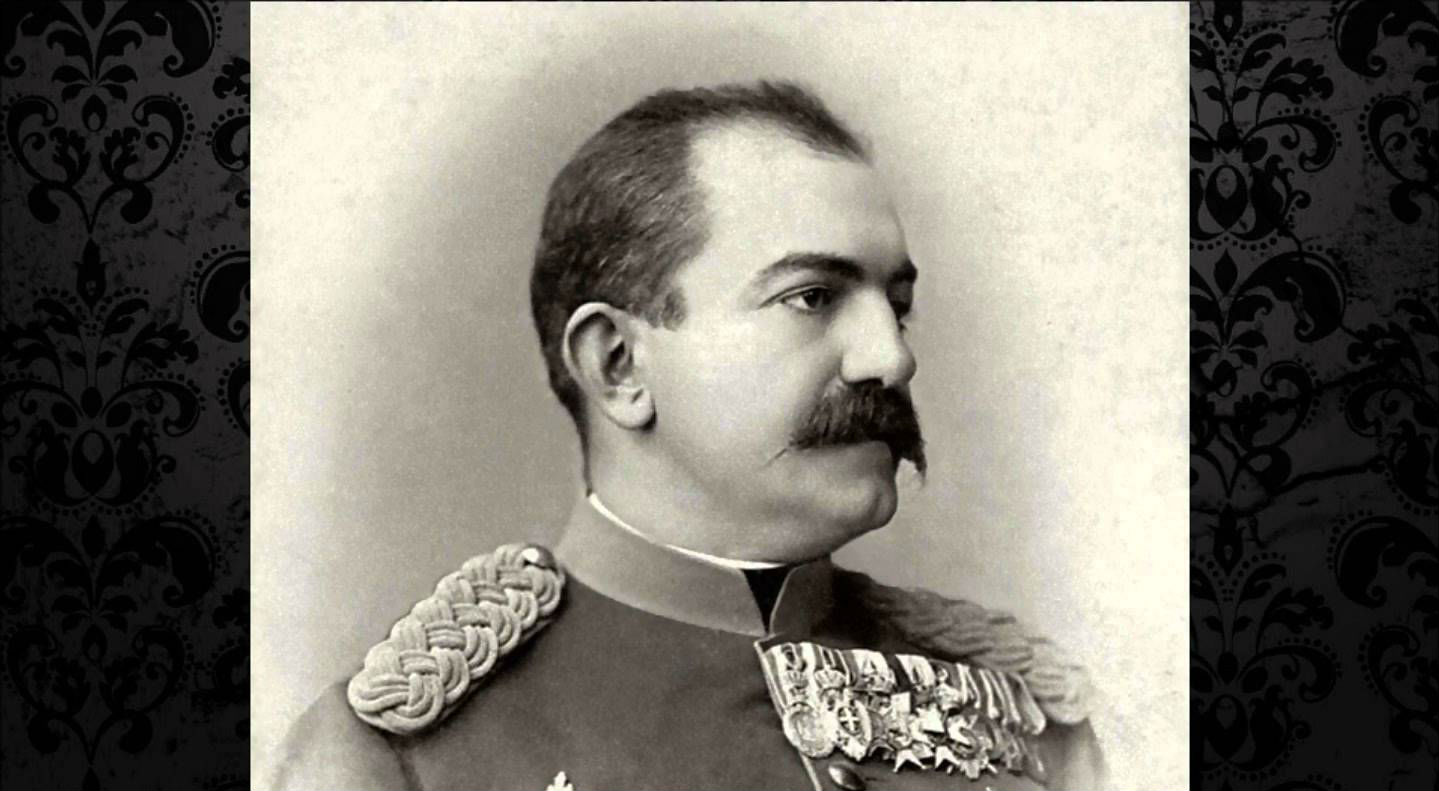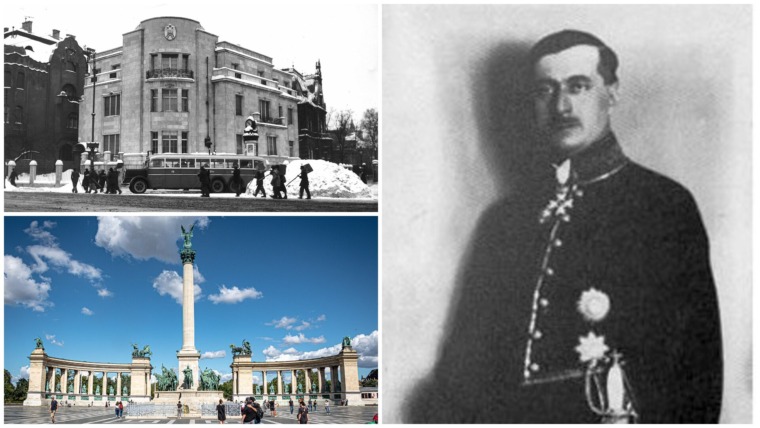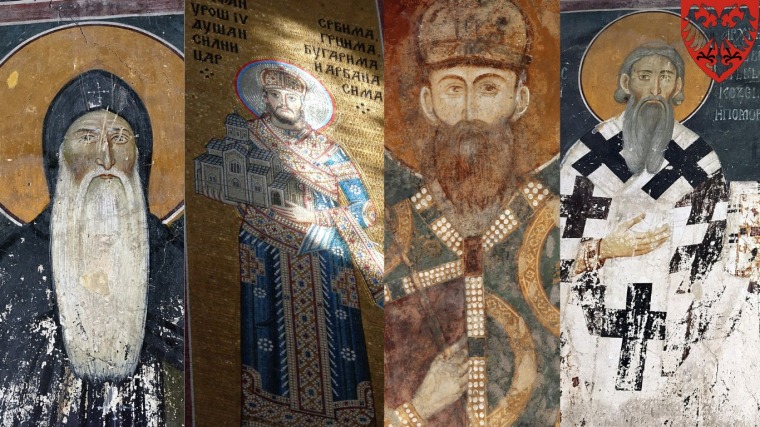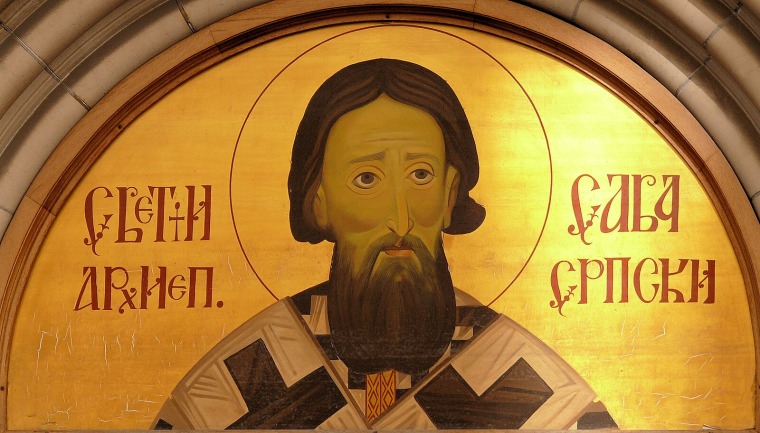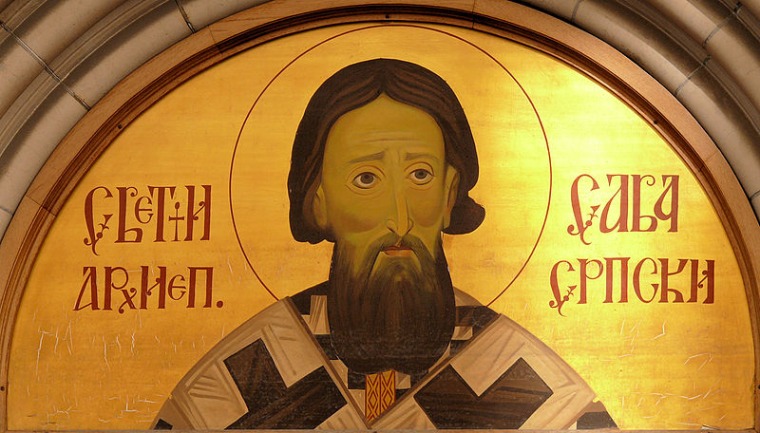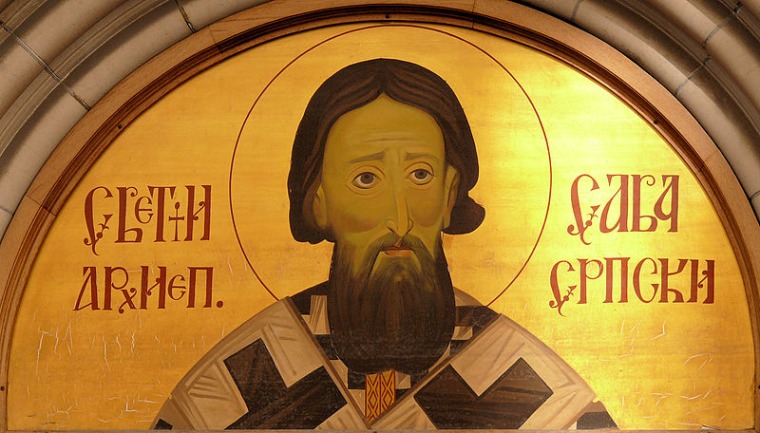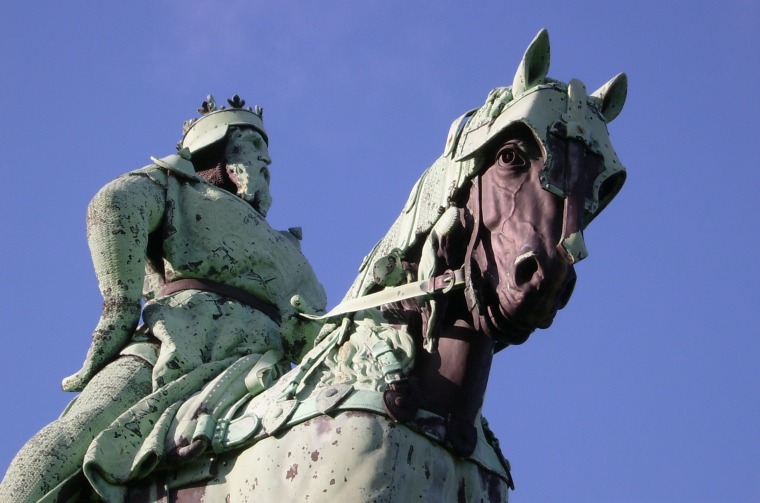Serbian prince, Rastko Nemanjić as a monk Sava fought for and got the autocephaly of Serbian church and became its first Archbishop and legislator.
He built schools, hospitals and monasteries among which the most significant is the Hilandar monastery at Mount Athos. Years later he was declared a saint and today people is honoring him at the biggest orthodox temple in the Balkans, the Saint Sava Temple in Belgrade.
As the youngest son of Serbian Grand Prince Stefan Nemanja, Rastko could have fought with his brothers for power, as it was common tradition among princes; instead he chose a different path, a path taken by a few exceptional people.
His parents were already planning to arrange a marriage for a 15-yeard-old Rastko when one evening a group of Russian monks from Holy Mountain (Mount Athos) paid a visit to the Nemanjić family and once and for all changed their plans. His youngest son found himself in the stories of monks from Mount Athos. Their lifestyle was what Rastko dreamt of and he decided to follow his dream.
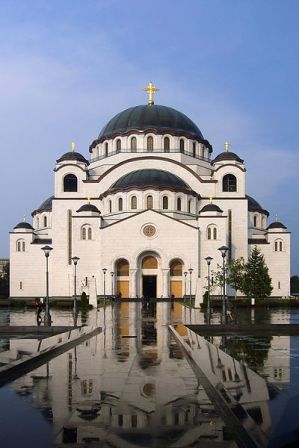 Serbian Grand Prince Stefan Nemanja was furious and sad at the same time due to Rastko’s leaving and he initiated a search for his son, but Rastko couldn’t be forced to return to Serbia. He was sure of his decision, and the same evening he secretly took monastic vows and received the monastic name Sava. He sent his secular clothes to his parents as a proof that he’s already become a clergyman.
Serbian Grand Prince Stefan Nemanja was furious and sad at the same time due to Rastko’s leaving and he initiated a search for his son, but Rastko couldn’t be forced to return to Serbia. He was sure of his decision, and the same evening he secretly took monastic vows and received the monastic name Sava. He sent his secular clothes to his parents as a proof that he’s already become a clergyman.
His father’s anger slowly diminished and after few years of correspondence with Sava, he expressed a wish to visit him at Mount Athos. He abdicated in favor of his son Stefan Nemanjić, took his monastic vows at the Studenica Monastery and joined his son Sava now as a monk Simeon.
Traveling across Mount Athos, Simeon and Sava came to idea to build a Serbian monastery here. They asked the Greek Emperor for a piece of land and got the permission to build the monastery. And so the Hilandar, one of the biggest Serbian temples, was built surrounded with massive walls. Here is where Sava wrote the “Hilandar Typicon” in which he described the rules of conduct that should be obeyed by monks and in which he included all his experience and comprehension of the monastic life.
During Sava’s stay at Mount Athos, in Serbia Vukan, the oldest son of already late Stefan Nemanja, took the throne from his brother, the prince Stefan the First-Crowned. The difficult times came upon the country. Sava returned to Serbia with the remains of his father in order to make peace between his brothers. He completed his mission and made Stefan and Vukan reconcile over their father’s body at the Studenica monastery. Afterwards, he started building his historical contribution to Serbia, the Žiča monastery, with his brother Stefan.
During his stay in the Studenica hermitage, Sava wrote a work that depicts the life of his father, “The Life of Saint Simeon”, a valuable work of the Serbian medieval literature. He also wrote the “Studenica Typicon” prescribing the regulation and organization of the monastery’s administration, prayers, diet and feasting. It is considered the “first constitution of the Serbian Orthodox Church”.
Sava’s most important mission took place in 1219 during his visit to Nicaea when he got the autocephaly for the Serbian orthodox church from the Despot of Nicaea Theodore Laskaris and the Patriarch Manuel I Sarantenos. Upon his arrival to Serbia, he determined the Žica monastery as the center of the new Serbian Archbishopric, and his Typicons served as the guidelines for monks’ behavior.
Saint Sava went to pilgrimage on two occasions when he visited Palestine, Jordan, Bethlehem… Returning from his second pilgrimage, he died in 1236 in Tarnovo in Bulgaria, and King Vladislav transferred his body to the Mileševa Monastery.
Bulgarians also celebrate Saint Sava
Bulgarians truly respected Saint Sava as a diplomat. Sava’s nephew, Serbian king Vladislav, was a son-in-law of the then Bulgarian Emperor Yoan Asen II. He used to send Sava to complete some diplomatic affairs in the behalf of the Bulgarian Empire and always welcomed him with highest honors. Sava died in Tarnovo and was buried in the Monastery of the Holy Forty Martyrs in Veliko Tarnovo, next to six Bulgarian Emperors. Later his relics were transferred to the Mileševa monastery, but the Bulgarian Orthodox Church still celebrates our great saint.
Years later, in the late 16th century, at the time when the Ottoman Empire ruled this land, the cruel Sinan Pasha transferred Sava’s remains to Belgrade and burnt them. His intention was to hurt and frighten Serbian people, but it was also done due to his own personal fear from the influence that Sava had on people. It is considered that a hand of Saint Sava was saved and that it is kept in the Mileševa Monastery.
Long time after this event, in 1775 Sava was declared a Saint, and since 1823 (under the order of Prince Miloš Obrenović) to date, Saint Sava is celebrated on the 27th of January as the saint-patron day of schools. On that occasion all schools in Serbia prepare a performance and they pay tribute to this great saint, writer and legislator by singing the St. Sava Anthem.
The Temple of Saint Sava, one of the biggest orthodox temples in the world, was built in honor of Sava, in Vračar, at the spot where the saint’s remains were burnt. Due to its size the Temple dominates the surroundings and it can be seen from different parts of Belgrade. The view on the Temple is especially stunning at night, under the spotlights.



